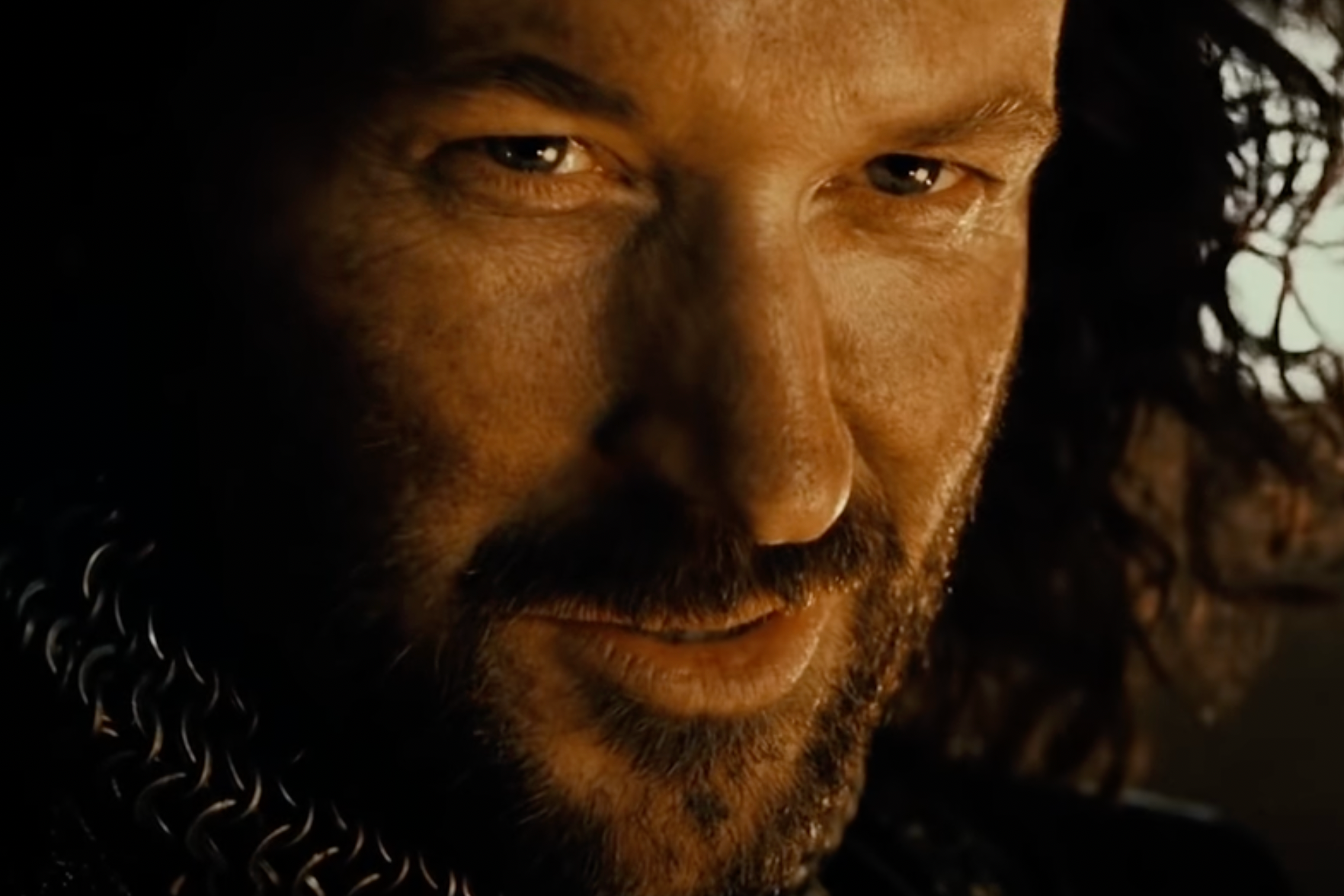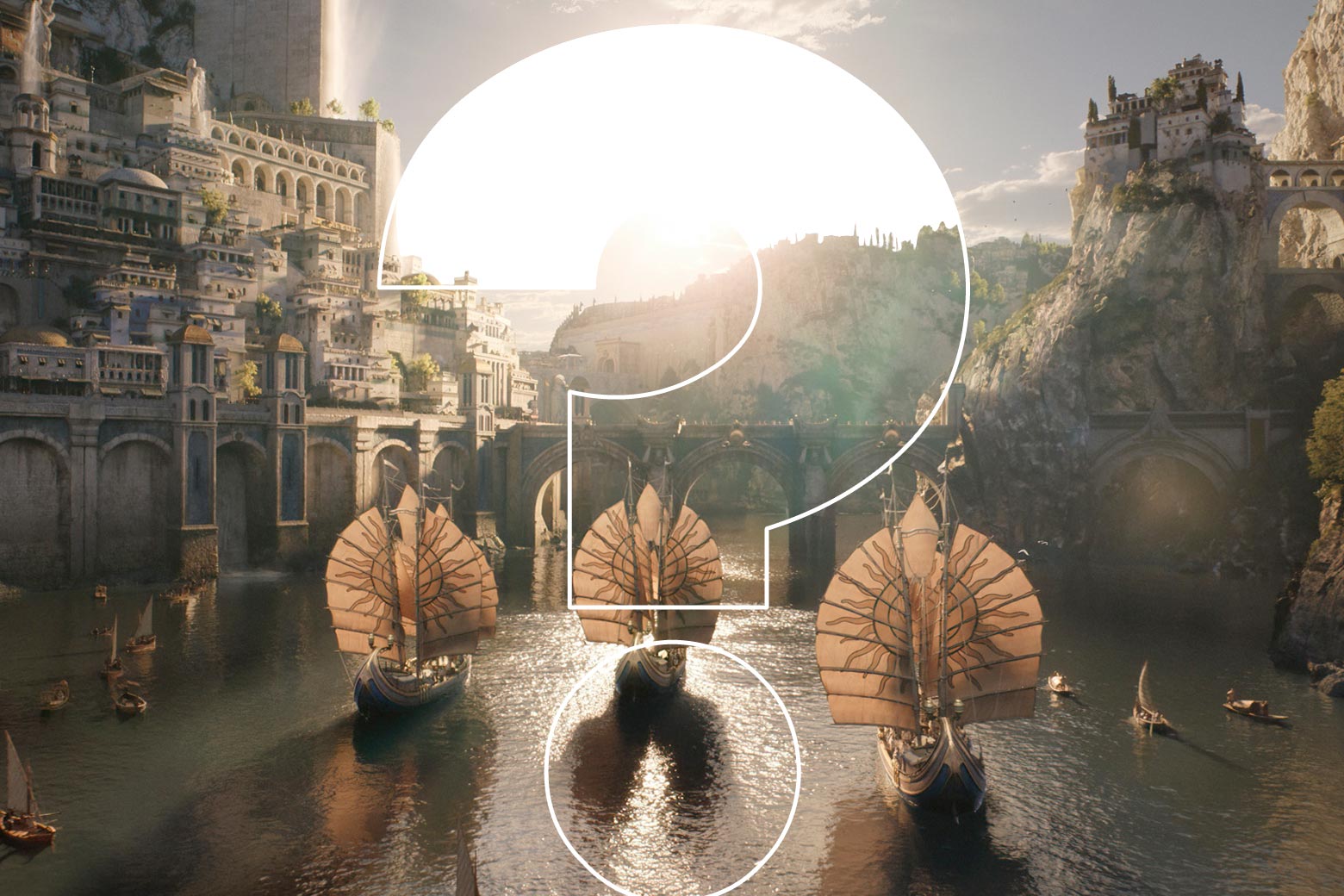This post contains spoilers for the first three episodes of The Lord of the Rings: The Rings of Power.
Amazon founder Jeff Bezos is busy defending the late Queen Elizabeth II’s memory on Twitter, and his reverence for the ruling class is fitting given that Friday’s episode of The Rings of Power is packed with monarchs: a young Isildur (Maxim Baldry), who will later become King of Gondor; Queen Regent Míriel of Númenor (Cynthia Addai-Robinson); and Halbrand (Charlie Vickers), who is revealed to be the secret king of the Southlands.
As we’ve noted previously, it’s not necessary to read Tolkien’s works before watching The Rings of Power—and even if you have, there’s a lot of lore to track. Remember: The Lord of the Rings takes place in Middle-earth in the Third Age, but The Rings of Power takes place thousands of years earlier, in the Second Age. Below, we attempt to answer the most pressing questions casual fans might have about the series’ third episode, “Adar.”
Who is Adar, anyway?
A new character played by Joseph Mawle created specifically for The Rings of Power—and, it seems safe to say, a villain.
What’s the deal with Númenor? Was this place in The Lord of the Rings?
Númenor is an island to the west of Middle-earth. By the time of The Lord of the Rings, the island of Númenor has been destroyed, sunk beneath the sea.
As the characters in The Rings of Power mention, the island was a gift from the Valar—divine beings—to Men after the defeat of Morgoth, Middle-earth’s oldest Big Bad. Their first king was Elros, Elrond’s brother, who chose the way of Men rather than the way of Elves. As we see from the queen’s reaction when Galadriel suggests Númenor was a gift, the Númenóreans are growing resentful of the Valar, making them vulnerable to Sauron and his promises down the line and sowing the seeds of their own destruction.
If Númenor was destroyed, then why does that white tree look so familiar?
You’re probably thinking of the White Tree of Gondor from The Lord of the Rings. The White Tree of Gondor is not the same tree as the one in Númenor, but it is a descendent of it. When Númenor is destroyed, Isildur takes a cutting from the tree to replant it later.
Isildur? Where have I heard that name before?
It’s Aragorn’s great-great-great-great-great-great-great-etc-grandfather. In The Rings of Power, the One Ring hasn’t yet been created, but when it is created, Isildur will be the one to defeat Sauron and cut it off his finger. However, he fails to destroy the ring.
If you’re a fan of the Peter Jackson movies, you may recall Hugo Weaving’s Elrond memorably yelling “Cast it into the fire!” to Isildur, who responds by making this face:

In The Rings of Power, we see a young Isildur pondering life as a sailor. He has not yet perfected his smirk.
And who is Elendil?
Isildur’s dad and Aragorn’s great-great-great-great-great-great-great-etc-PLUS-ONE-grandfather.
As you might remember from Elendil’s very brief appearance at the beginning of Jackson’s movies, he gets killed in the great battle against Sauron, when his sword breaks. It’s also the shards of Elendil’s sword, named Narsil, that Isildur uses to cut off Sauron’s finger. In The Lord of the Rings, Elendil’s sword is reforged as Andúril, and Aragorn carries it into the final battle.
What’s up with the Southlands and why have I never heard of them before?
Because by the time of The Lord of the Rings, they have a different name. As Galadriel realizes in this episode, Sauron’s symbol is actually a map—a map of what we’ll come to know as Mordor, imitating the shape of the mountain ranges around Mount Doom.
So Halbrand, our handsome rogue, is their king?
Though he doesn’t cop to it and claims he found royal documents on a dead man, Galadriel pegs him as the Southlands’ rightful ruler. Halbrand warns her: “The heir to this mark is heir to more than just nobility, for it was his ancestor who swore a blood oath to Morgoth. I am not the hero you seek. It was my family that lost the war.”
Is this shaggy-haired, reluctant king just a knockoff Aragorn?
That remains to be seen.
What’s the difference between goblins and orcs?
Nothing! Tolkien uses them more or less interchangeably. As he explains in the preface to The Hobbit:
Orc is not an English word. It occurs in one or two places but is usually translated goblin (or hobgoblin for the larger kinds). Orc is the hobbits’ form of the name given at that time to these creatures …
Why can’t the orcs be out in the sunlight?
While it won’t make them turn to stone, like the trolls in The Hobbit, orcs are not a fan of sunshine, although it’s not entirely clear or consistent in the books just how debilitating it is to them. (The books are also silent on the question of whether they have any vulnerability to garlic.) Uruk-hai, the superorcs that Saruman creates as his army in The Lord of the Rings, are more tolerant of the sun’s rays than other orcs, though as Treebeard tells Pippin and Merry, they still hate it.
We’re three episodes into this show. Where is Sauron???
We still don’t know, but remember, at this stage of the story, Sauron is a shapeshifter. He could be hiding in plain sight.
